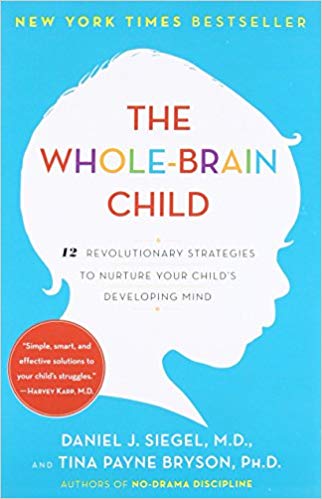The Whole-Brain Child Summary

3 min read ⌚

12 Revolutionary Strategies to Nurture Your Child’s Developing Mind
“The Whole Brain Child” is a guidebook for parents to understand their children’s minds.
About Daniel J. Siegel & Tina Payne Bryson

Dr. Daniel J. Siegel is an author, leader at Mindsight Institute, and teacher of psychiatry at UCLA.

Dr. Tina Payne Bryson is an author, a Child Development Specialist at Saint Mark’s School in Altadena, and a clinical psychotherapist in Arcadia, California.
“The Whole-Brain Child Summary”
New parents get a bunch of advice from everyone around them. However, one type of advice is crucial: how parents should approach the child’s brain?
And yet, no one has advice on this matter.
Children use only a portion of their brain’s capacity when they deal with life situations.
The reason behind this lies in growth: different brain functions develop at different times.
As a parent, you need to help your child explore the new brain functions as it gets them and guide her through the process of getting used to using these new functions.
Our brains determine our characters. Also, minds are changed by different experiences.
This means that parenting is all about dealing with your child’s experiences, in a way that they shape the person it becomes.
However, we are not saying that you should protect your child from bad experiences.
In fact, you should let it have such instances, but you should guide it to use the brain in a way that will make it a positive experience for its growth overall.
The key notion behind “managing” your child’s brain growth is integration. In other words, the brain has many different parts, and for a child to grow into a smart and happy individual, it needs to learn how to integrate all of these parts to cope with the experiences that come its way.
This is what is called whole-brain parenting.
Okay, but how can you help your child to start using their whole brain?
Well, a good place to start is to start using all of yours.
Your child picks up your behaviors and copies them.
Key Lessons from “The Whole-Brain Child”
1. Two Strategies for Teaching Your Three-Year-Old to Use Both Hemispheres
2. What to Do When A Toddler Throws a Tantrum
3. Develop Positive Memories
Two Strategies for Teaching Your Three-Year-Old to Use Both Hemispheres
Connect and redirect: connecting with your child’s feelings and redirecting it toward a logical explanation.
Name it to tame it: make your child name the feelings it gets when it retells its experiences.
What to Do When A Toddler Throws a Tantrum
Your child has two brains: a higher and a lower brain.
When it throws a tantrum, it uses the lower brain. To deal with this, first, ask your child what has caused its anger, and then, ask your child for a solution.
By doing this, you will engage its higher brain, instead of just enraging the lower one with punishment.
Make sure that you use all opportunities to guide your child to use the higher brain.
Develop Positive Memories
Memories are associations between events of the past and the present.
Make sure that you do everything you can to form positive memories for your child. You can do this, by creating a pool of positive experiences in the present, that would make good memories in the future.
Like this summary? We’d Like to invite you to download our free 12 min app, for more amazing summaries and audiobooks.







